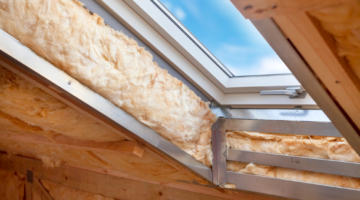
Want to save yourself some of that hard earned cash? You can start by making your home more energy efficient.
There isn’t a human on this planet that doesn’t like to save money where they can, which is one reason that so many of us are choosing to live a greener life. But, reducing the amount of energy you waste isn’t just about cutting the cost of your fuel bills. By making your home more energy efficient, you’ll not only have more money in the bank but you’ll also be doing your bit for the environment.
Here are a few things you can do to help maximise your home’s energy efficiency so that you can reduce your carbon emissions and save some cash.
Free Home Energy Check
The Energy Saving Trust has developed a free Home Energy Check tool that helps you find out the efficiency of your home. It’s basically a questionnaire that assesses your home’s energy performance and then suggests ways to improve your rating.
Three Key Ways To Dramatically Reduce Energy Costs
Making your home more eco-friendly with energy efficient upgrades makes a great deal of financial and economic sense, helping you to lower your fuel bills and shrink your carbon footprint over time. We’re going to discuss the three best actions you can take to reduce your domestic energy usage.
1. Choose A High-Efficiency Condensing Boiler
Modern condensing boilers are very efficient because they’re engineered to save energy. They work by capturing heat which would normally escape from a non-condensing boiler’s flue so that they can re-use the saved heat, meaning condensing boilers use less fuel to heat your home and produce hot water.
Today, all new gas and oil boilers that are installed in UK homes must use condensing technology because these types of boilers achieve the highest efficiency ratings, with some reaching over 90%. However, most old non-condensing models only achieve 70% efficiency or less as they release and waste more heat, rather than reusing it to save excess gases.
Put simply, condensing boilers are able to heat water more efficiently by using less gas or oil to do the exact same job as an inefficient non-condensing boiler. Replacing your old boiler with a new energy-efficient model could save as much as £300 a year on your utility bills.
Should you invest in a new boiler, prices range between £600 and £2000 depending on the boiler specifications and brand that you buy from. You will also need to consider the installation cost as well as ensuring the engineer is Gas Safe Registered.
2. Install Cavity Wall Insulation
Around 35% of heat is lost through the walls of an uninsulated home, which explains why so many UK homeowners have opted for cavity wall insulation (CWI). From the 1990’s onward, the vast majority of homes were built with with cavity wall insulation, but properties built prior to this are unlikely to be properly insulated.
The good news is that CWI is fairly easy to install., though you’ll need to hire a specialist insulation company with a good reputation as cavity wall insulation requires the skills of an experienced professional to eliminate the risk of any complications. In 2017 it came to light that millions of UK homes had CWI improperly fitted as part of a government funding scheme, and those involved are now faced with damp, cold and mouldy conditions as a result. Some of these unfortunate homeowners have increase in their energy bills.
If you do decide to have CWI installed, it will take around two hours to fill your walls. Your chosen specialist will need to drill holes in the outside walls of your home and inject insulation materials, such as mineral wool, polystyrene beads or polyurethane foam. The material traps air in its fibres and acts as a natural insulator, so it has the same sort of effect as wearing an extra layer of clothing.
The price for installing CWI varies depending on where you live and the size of your home. However, regardless of the size of your house, it is estimated that installation costs can be recovered in as little as five years given that you can be saving up to £250 a year on your energy bills.
3. Get Your Loft Insulated
Loft insulation is cheap to install and provides a cost-effective way to reduce your energy bills and carbon footprint. With an uninsulated loft, your home could be losing up to a quarter of its heat via the roof. If you already have loft insulation, it’s worth checking whether you have the recommended depth, which is currently 270mm. The recommended minimum depth has increased over time, so yours could be too low if you had it installed many or even a few years ago.
Installing fibreglass insulation material on your loft could reduce the amount of heat you lose through the roof by as much as 75%. According to the Energy Saving Trust, you could save up to £220 a year by insulating your loft. Loft insulation also has a positive effect on your property’s EPC rating, which can help to increase the value of your property.
If you plan to insulate your loft yourself, remember to put a 100mm layer between the joists, then start at the area that is furthest away from the loft hatch when layering the installation over the top. Also, don’t forget to look in to lagging pipes or water tanks in your loft. With the UK government pushing to reduce carbon emissions by 2020, government grants are still available for loft insulation so you might be able to save on all or part of the cost if you meet certain eligibility requirements.












This blog is an excellent resource for anyone who is interested in reducing their energy consumption at home. It provides a number of helpful articles that are simple to understand and that explain a variety of different things that can be done around the house to reduce energy consumption. This blog is extremely comprehensive, and https://smarthomeboilers.co.uk/ it discusses anything from easy adjustments that readers can do to more difficult adjustments. In addition to that, the blog has an attractive layout and is simple to digest.
This blog is an excellent resource for anyone who is interested in reducing their energy consumption at home. It provides a number of helpful articles that are simple to understand and that explain a variety of different things that can be done around the house to reduce energy consumption. This blog is extremely comprehensive, and https://smarthomeboilers.co.uk/ it discusses anything from easy adjustments that readers can do to more difficult adjustments. In addition to that, the blog has an attractive layout and is simple to digest.